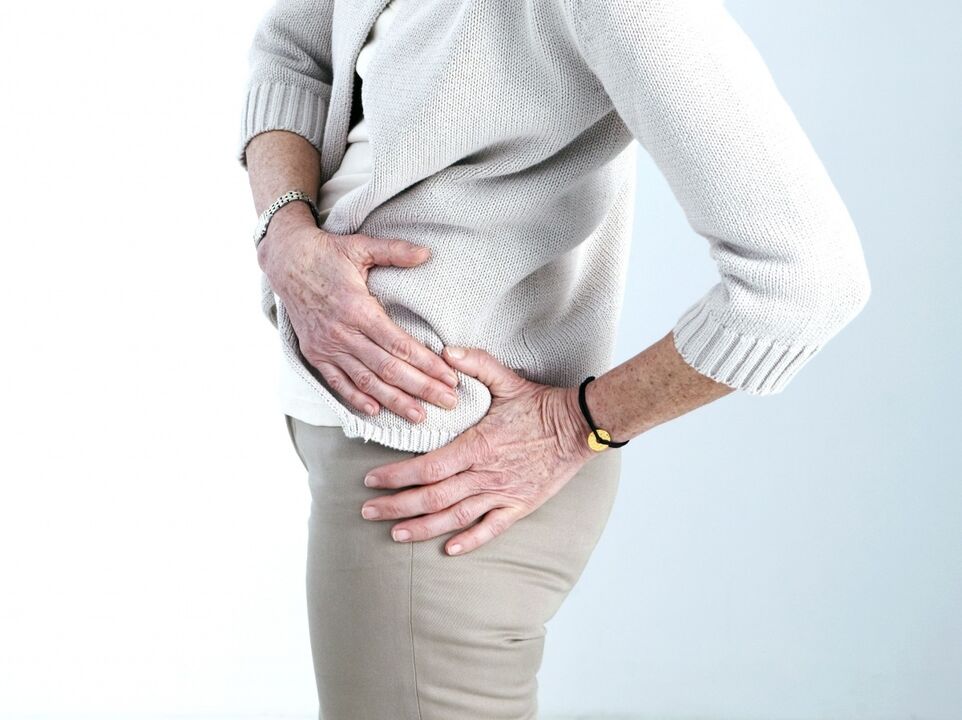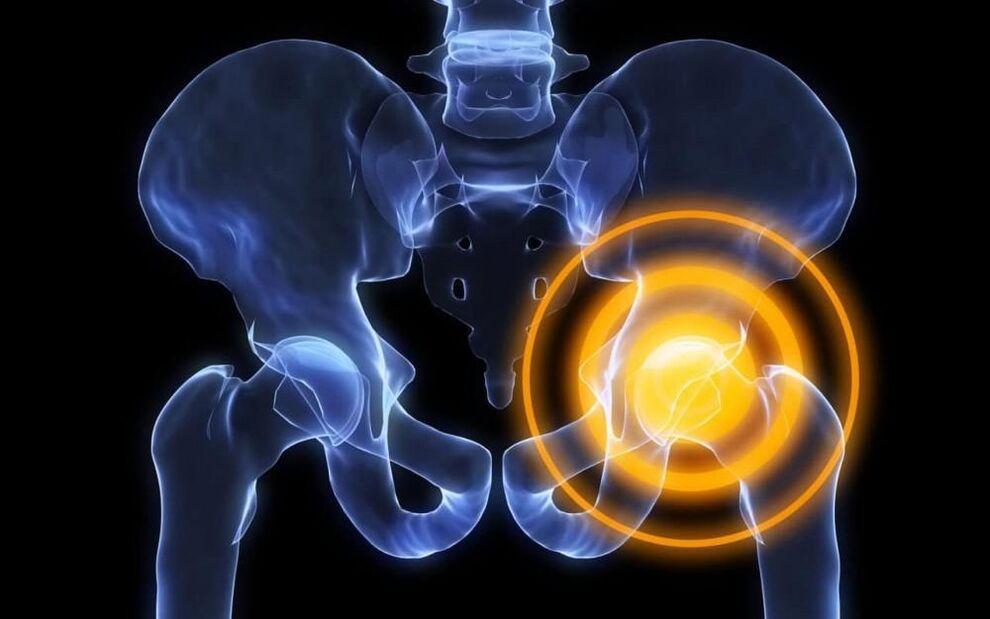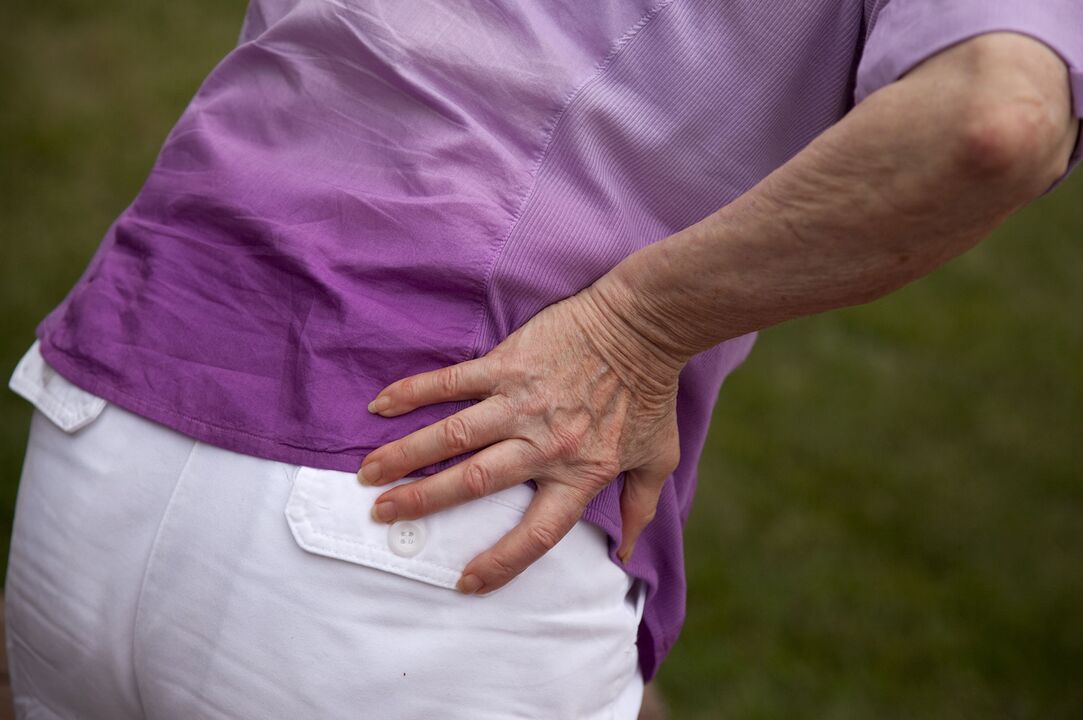
The appearance of pain in the hip joint should certainly be wary, as this is the largest bone connection without which the process of walking is impossible. It maintains balance, redistributing weight between the spine and lower limbs. When hip joint function is impaired, the patient’s quality of life immediately decreases, and his or her physical activity decreases.
If you feel pain in the hip joint, you need to determine the cause. Treatment of pain depends on the pathology for which it is symptomatic. Complex measures and strict adherence to the recommendations will help eliminate the disease and maintain motor activity of the joints.
Disorders of the hip joint make it impossible to move actively. Decreased functionality limits the patient in terms of independent movement and performance.
So what is the cause of unpleasant discomfort in the hip joint, and how can it be treated at home? Let's try to figure it out.
cause
Pain in the hip joint can appear for a variety of reasons: due to damage to the joint itself, both to the right and to the left, as well as to the bones, cartilage or ligaments located next to it. Numbness and restriction of movement throughout the hip often appear with painful symptoms.
Hip joint disease can appear at any age, but often involves the elderly. If pain occurs, it is advisable to consult a general practitioner, he will arrange an initial examination and recommend which doctor you should go.
The most common causes of hip pain are:
- dislocated;
- broken bones;
- infectious inflammation, or arthritis;
- degenerative changes, or osteoarthritis (coxarthrosis);
- aseptic necrosis of the femoral head;
- inflammation of the periarticular bag (bursitis);
- non -infectious inflammation in autoimmune diseases of connective tissue;
- period of pregnancy.
The prevalence of pain syndrome in this localization increases with age. If among young people under the age of 18, pain in the hip joint is found in 8-10%, then for middle-aged people this figure is 20-30%. At the age of 50-59, 40% already experience this, and among the elderly - from 50 to 60%. Women are more likely to experience this localization pain syndrome than men.
By age
Typical pathological conditions for different age groups cause pain in the hip joint:
- Adults and Senior Citizens. Osteoarthritis (coxarthrosis), injury and deformity of the joints, pressing on the acetabulum.
- Children and adolescents. Perthes disease, transient synovitis, acquired varus deformities, tuberculosis lesions, injuries and joint deformities.
- Newborns and infants under 1 year of age. Congenital dislocation of the hip, due to generic epiphysis, acute purulent osteoarthritis, congenital varus deformity.
Bursitis
The main signs of bursitis:
- with the development of the disease, the appearance of back pain;
- increased discomfort when moving the legs;
- increased pain after prolonged sitting, back pain;
- sharp and burning pain, especially when lying on the side at night, extends to the entire surface of the thigh.
If an infection enters, purulent bursitis may appear, which is characterized by acute pain in the hip joint. For this type of bursitis, the characteristic symptom is the inability to extend the leg fully. When pressed, firmness is felt, which can spread over the large surface of the thigh. Probably the appearance of back pain.
Osteoarthritis (coxarthrosis)
Coxarthrosis is based on degenerative (destruction) and dystrophic (malnutrition) processes in the hip joint. As a result, the joint stops performing its function - the movement of the foot is disrupted. It can be disease independent or develop with secondary damage to the joints (tumors in the bones). In old age, coxarthrosis recurs after a hip fracture.
Depending on the severity of the changes that have occurred in the joint, there are 3 stages of coxarthrosis.
- In stage 3, pain in the hip joint bothers the patient even at rest, at night. Significant lameness, which forces the use of canes.
- In stage 2 coxarthrosis, the pain begins to radiate to the groin, inside and front of the thigh, often falling to the knee. They appear after a normal daily load, but during rest they do not bother.
- Stage 1 is characterized by pain in the hip joint that occurs during excessive exercise: walking up stairs with a load in your hands, walking more than 2-3 kilometers, running. The sensation of pain decreases after a short rest.
The choice of method to treat arthrosis of the hip joint depends on the severity of the changes that have occurred in the joint. 1st and 2nd degrees of the disease can be treated, as a rule, conservatively. Anti-inflammatory drugs, chondroprotectors, drugs that increase blood circulation in the joints, physiotherapy, and therapeutic exercises are prescribed. The last stage is treated only with the help of surgery.

Broken hip
Very common injuries, especially in the elderly with weak bones. This condition is characterized by severe pain, inability to make any movements in the joints.
In this case, hospitalization is required for proper treatment, because hip fractures are often complicated by infectious processes, for example, bacterial arthritis, etc. The addition of inflammation significantly impairs fracture healing and contributes to improper bone fusion.
Dislocation of the hip joint
Often it is the result of road accidents, and also occurs during falls and various occupational injuries.
Clinical manifestations in dislocations: unbearable acute pain, almost absolute difficulty in the movement of the lower limbs, with damage to nerve endings, loss of sensitivity of the foot and ankle joints. With bilateral joint dislocation, symptoms are expressed in the form of intermittent claudication, or what is called "duck gait".
Concepts such as congenital hip dislocation, which is diagnosed in newborns, need to be highlighted. The disease is the result of the retardation of the acetabulum, which causes the head of the femur to fall out of its limits, thus forming a dislocation.
Subluxation
This is an incomplete loss of contact between the femoral head and the acetabulum. The person does not feel sharp pain, motor activity is slightly limited, but unpleasant sensations are always present.
joint pain
Systemic diseases of connective tissue, accompanied by damage to the joints and apparatus of the heart valve. It develops more frequently in girls and young women after streptococcal sore throat.
About two weeks after the disease, severe pain occurs in the large joints, which gradually diminish and disappear. Rheumatism does not cause permanent damage to the joints, the main danger is the development of acquired heart defects.
Joint pain
Arthritis is especially common in the elderly. The older a person is, the more processes can take place in his or her joints. Discomfort appears in the legs and groin area, cramps can be felt in the front of the thighs and even up to the knees. Symptoms are worse with walking and resting on the feet. It becomes difficult to get up from a sitting position, this causes severe pain in the hip joint.
Often, discomfort increases in the morning, but with physical activity, it decreases. But with excessive load, unpleasant sensations increase and stiffness in movement appears. Treatment depends on the diagnosis, usually anti-inflammatory medications, exercise therapy and hormone medications are prescribed.

Infection
Infectious arthritis can be caused by viruses such as influenza, staphylococcus, streptococcus and others. . . In such cases, the disease develops rapidly. Fever begins, swelling is observed in the affected joint area. Acute pain in the hip joint is observed with movement and even touching the affected area.
Slightly different symptomatology is observed in tuberculous arthritis, which most often affects the hip joint. In this case, the disease makes itself felt gradually. At first, a person begins to be bothered by a slight pain when walking, radiating to the legs - the middle of the thighs or knees. As the disease progresses, the hips are limited in movement in all directions, the affected area swells.
Tendinitis
Tendon inflammation, or tendonitis, usually affects people who are exposed to high levels of normal physical activity. Often these are athletes. It should be noted that the disease is sometimes invisible, especially if the patient reduces the load on the hip joint. And, conversely, with overactive movements and heavy loads, the pain becomes very strong.
Treatment of tendonitis is carried out with anti-inflammatory drugs-non-steroidal anti-inflammatory drugs can be prescribed.
Which doctor is treating?
This doctor's help may be needed if you have pain in the hip joint:
- Rheumatology;
- Trauma or orthopedic specialist;
- Physiotherapist;
- Neurologist.
The specialist will conduct a survey and examination of the patient, prescribing a comprehensive examination.
Diagnostics
Laboratory and instrumental research methods:
- X-ray and ultrasound examination. They are the gold standard for almost all hip joint diseases.
- General blood analysis. It will provide an opportunity to assess the general condition of the body.
- Biochemical blood tests and specific markers of rheumatological diseases.
- Urine examination. Urine color, quantity, clarity and density were determined. In addition, protein, glucose and bilirubin are important indicators.
- Morphological examination of biopsy specimens. It is used to study the structure of the material taken, especially often in cases of suspected skeletal oncological diseases.
- CT scan. Allows to visualize joints, bone tissue in several projections, to determine its density.
- Magnetic resonance imaging. Displays in a thin layer of body tissue in any plane.
- Osteoscintigraphy. With the introduction of osteotropic radiopharmaceuticals, the state of blood flow in bone tissue and the intensity of metabolic processes are visualized.
Notice the decrease in joint mobility. Remember if the disease is accompanied by fever, headache, local hyperemia, edema and other local manifestations. Do not be afraid to draw the attention of experts to the possible causes of the disease. Explain in detail everything that bothers you.
How is hip pain treated?
What to do if painful symptoms are found in the hip joint area? After all, the pelvis is an important link in the musculoskeletal system. And if there is serious pain, you should immediately contact a specialist. He or she will help diagnose and identify the root cause of the problem. The sooner the diagnosis is made, the more effective the treatment.
If you suspect that mild pain is associated with a minor injury or joint strain, the following steps can be taken:
- avoid pressure on aching joints, keep them calm;
- taking non-steroidal anti-inflammatory drugs;
- during sleep, it is advisable to lie on a healthy side.
Drug treatment consists of taking complex drugs in various directions:
- Hondoprotectors, mineral and vitamin complexes.
- Relax the muscles that reduce the cramps that occur with pain.
- NSAIDs and steroids. Steroid medications are only prescribed for severe symptoms.
- Means to improve microcirculation. They relieve edema and manifestations of hypoxia in the affected area.
- Diuretics to reduce swelling in inflamed areas.
Physiotherapeutic measures are also very important in the treatment of hip joint disease. They are carried out after the removal of acute inflammation and severe pain. Electrophoresis has proven itself well, with the help of high concentrations of the drug can be made directly on the affected area.
The progressive method is considered to be laser therapy, which produces analgesic, absorbent and anti-inflammatory effects. Magnetotherapy, diode dynamotherapy and drug phonophoresis have also been successfully used.

























